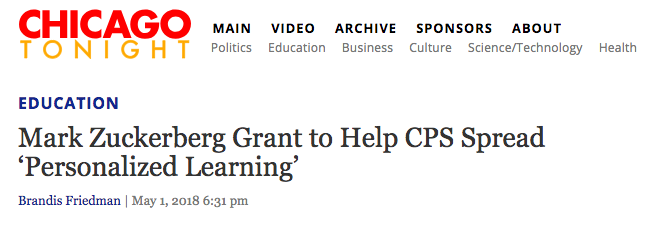In this Learner’s Mindset Discussion. Dr. Thibodeaux and I discuss the 5 biggest ePortfolio mistakes I have made over the years. Another way to look at these mistakes is from the context of what are the 5 things I wish I did sooner? If I were to start from scratch with what I know now what would I do?
- Switched to WordPress Sooner
- Stop playing the name game (i.e. website, blog, digital portfolio, ePortfolio, etc.)
- Create a domain of my own
- Post sooner and smaller
- Digital dump drawer
Bonus Mistake – 5b. or 6. Effective navigation structure
The following is a short summary of the highlights from the discussion:
1. Switched to WordPress Sooner
I started teaching fully online in 1995 and I started my first ePortfolio or started keeping a weblog what we refer to as a Blog at the same time. Unfortunately, I don’t have a fully functional record going back to 1995 because I kept on chasing the next best platform. I had learned HTML (hypertext markup language) and quickly realized that this wasn’t an efficient way to post quickly and often so I started using an early content management system what are commonly called CMS back in the late 90s. Unfortunately, many of these systems like XOOPS, Hyperwave, and Mambo no longer exist and many of the CMSs like Joomla and Drupal that are still around today are not the best tool for an ePortfolio. I have lost over a decade of my posts because of this. I have many archived versions of my earlier sites exported to HTML but these archives are just too difficult to use. In early 2000 I also started posting for the institutions that I was working for and when I left those institutions all may work remained and in most cases is no longer available. From 2006-2009 I posted almost daily and while I do have an archive it isn’t easily accessible online. In 2009 I finally stopped shopping around and realized that WordPress was going to be around for the long haul can I committed to this platform.
2. Stop playing the name game
My ePortfolio is the same as my blog or as my website, or my net presence. Regardless of what you call it…this is my space on the internet that I fully control where I can share my voice, insights, ideas, and resources with others… or not. This issue also contributed to my search for the ideal platform. I know I wasn’t just blogging so I actually stayed away the early WP because it really just focused on 90% of what I wanted to do. It wasn’t long before WP matured to the point it did everything the early CMS did and much more. But I still waited for too many years to move to it and also to create my own domain.
3. Create a domain of my own.
I own many many domains which I have parked and don’t use and in 2009 I finally registered my own name and have been using this as my only website, ePortfolio, blog, or whatever you want to call it. I wasted so much time, money, and resources moving from platform to platform or trying to copy the work when I was working with a number of different educational institutions. If you are using your school or institution’s platform for your website, blog, ePortfolio, etc. you never really own it and it will stay with the institution when you leave. Once again I have lost so much of my work over the years because I made this mistake.
4. Post sooner and smaller.
Seth Godin posts almost daily and sometimes it is just a matter of 2-3 sentences. Some of these best or most memorable and useful posts have been 2-3 sentences. It has taken me WAY too long to realize that my posts don’t have to have every detail or that they need to be perfect. It is much better to get your ideas out and in the process, you start to make those meaningful connections as you reflect on your experiences. You can always go back and edit what you have written or add a Part B or follow-up post.
5. Digital dump drawer
If you want your ideas to be useful to others you just can dump all your digital content into your site and treat it like people treat a dump drawer–you know that drawer or shelf or cabinet that you just dump things into and that you can never find again. Rather than just dump assignments, essays, or other digital content into your digital container you need to create a context for this information and connect it to that context. This is an integral part of making that meaningful connection.
Bonus
5b. or 6. Effective navigation structure
Just because you know what rabbit trail to take to your information doesn’t mean others will. Building an effective navigation structure, using tags and categories, and having a functional search engine will help others find your information…so will sending your audience an accurate URL. Having a fully functional search engine will also help you and your users to find things that haven’t been titled or categorized well. When you have several hundred or thousand posts/pages on your site a search engine is a necessity not only for your user but for yourself.
Links to some of the people, sites, or tools I mentioned in LMD and this post
Levi Bikes
http://levibikes.com/
Seth Godin’s Blog
https://seths.blog
WP – CMS Market Share
https://w3techs.com/technologies/overview/content_management/all
WordPress history
https://codex.wordpress.org/History
Mambo history
https://en.wikipedia.org/wiki/Mambo_(software)
Joomla History
https://cms2cms.com/blog/hyper-speed-joomla-history/
Evolution of the CMS
https://cms2cms.com/blog/evolution-cms-platform-caveman-homo-sapiens/
Drupal History
https://www.drupal.org/about/history
History of blogging
https://blog.hubspot.com/marketing/history-of-blogging
History of EduBlog
http://historyofeducationsociety.blogspot.com/
https://en.wikipedia.org/wiki/Edublog

































